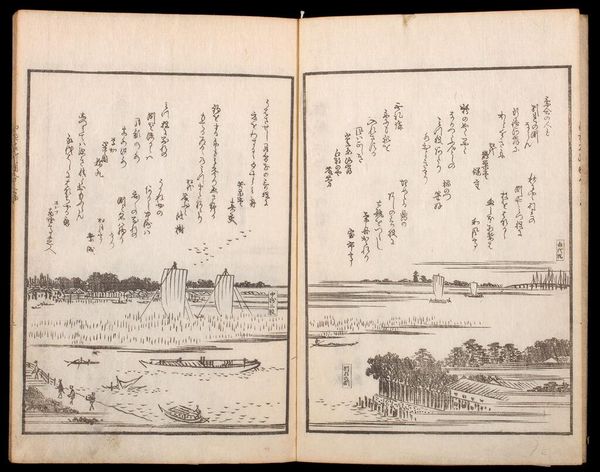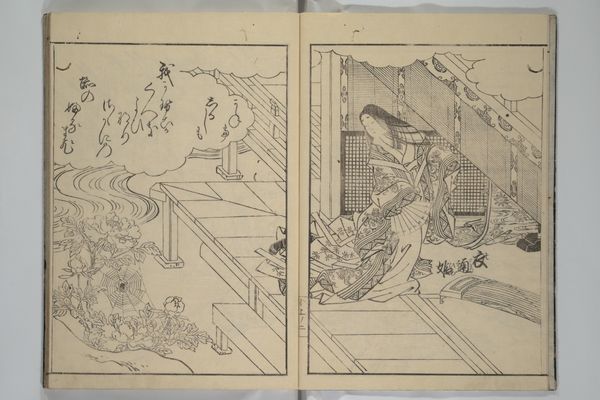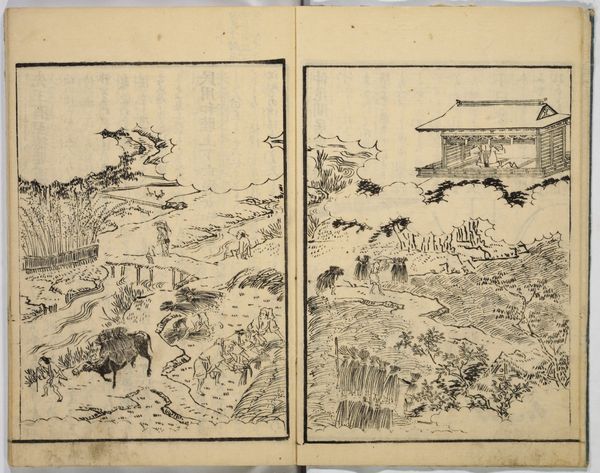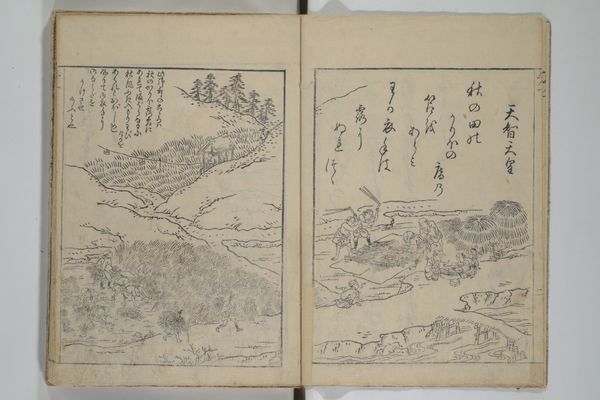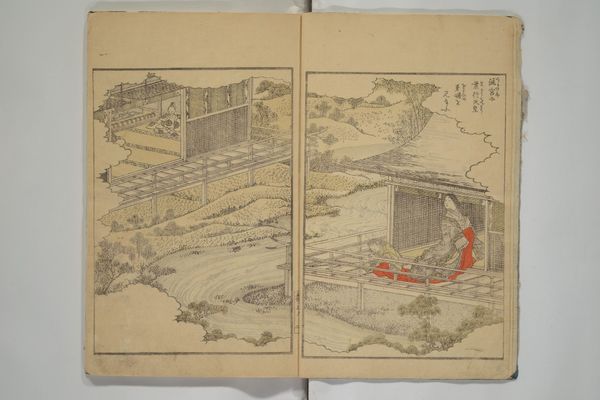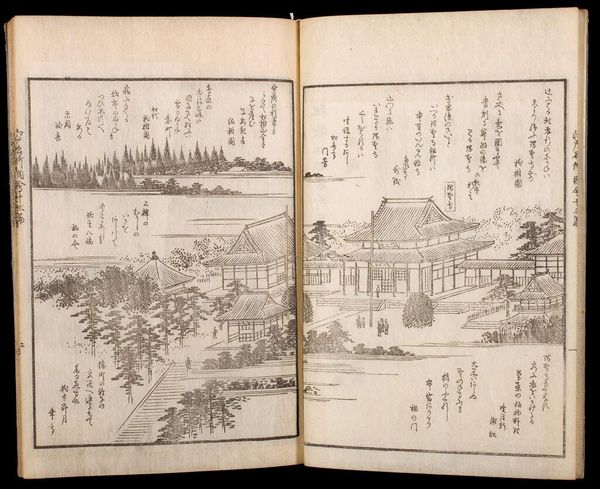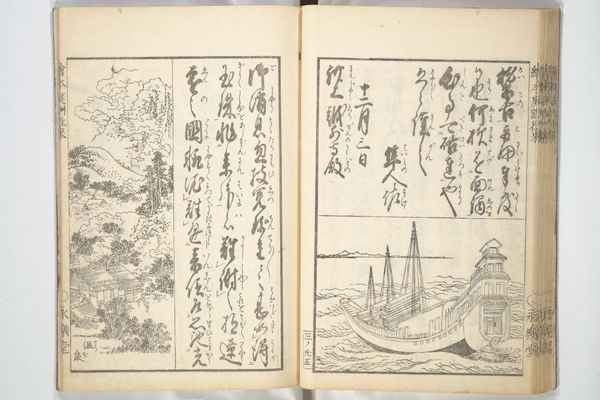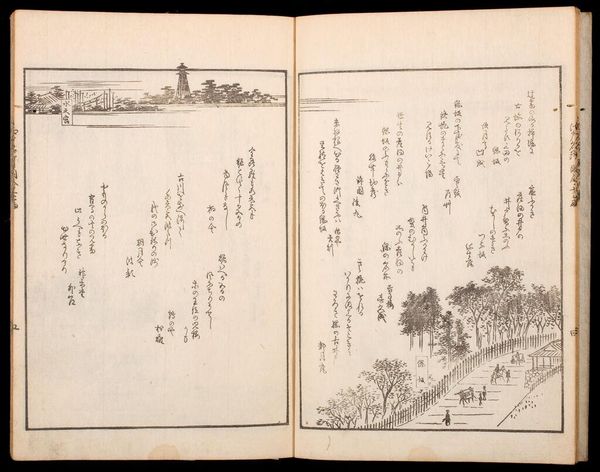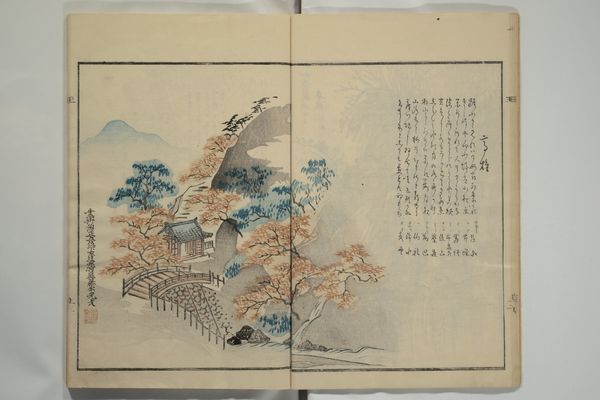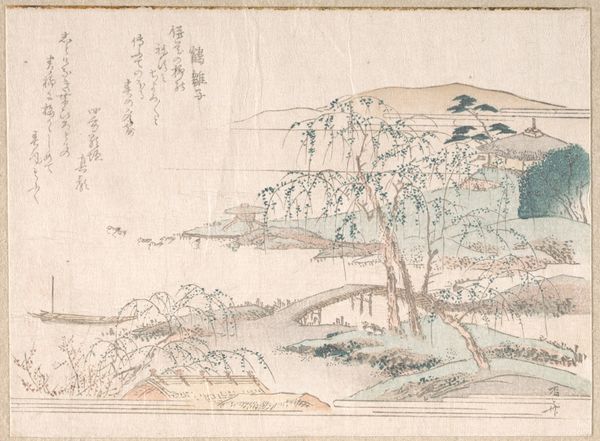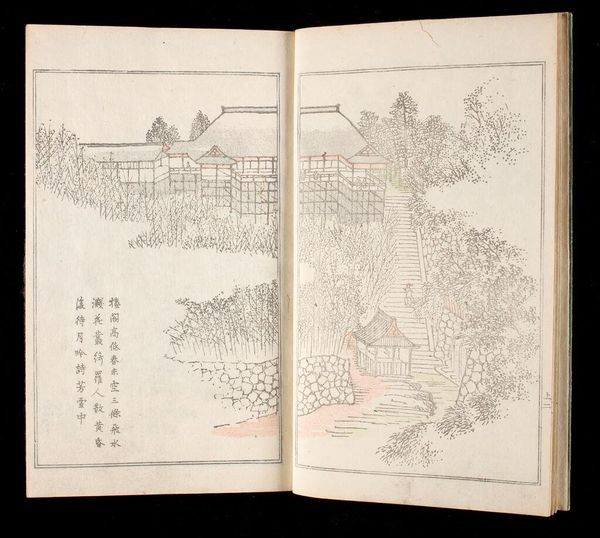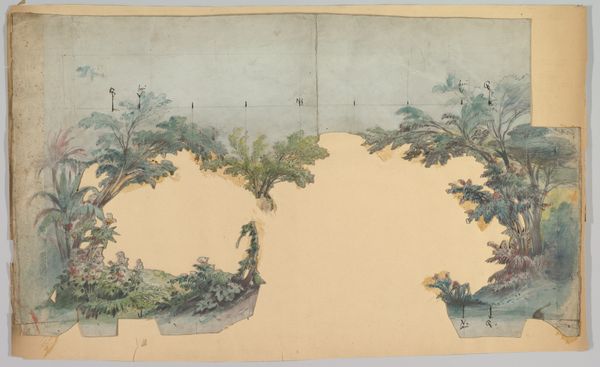
Illustrated Book of Floral Arrangements in the Mishō Style 1931
0:00
0:00
drawing, print, paper, ink
#
drawing
# print
#
book
#
asian-art
#
landscape
#
house
#
paper
#
ink
#
geometric
#
cityscape
Dimensions: a: 8 5/8 × 5 7/8 × 1/4 in. (21.9 × 14.9 × 0.6 cm) b: 8 5/8 × 5 7/8 × 3/16 in. (21.9 × 14.9 × 0.5 cm) c: 9 × 6 3/16 × 1/4 in. (22.9 × 15.7 × 0.6 cm) d: 9 × 6 × 1/4 in. (22.9 × 15.2 × 0.6 cm) e: 9 × 6 × 1/4 in. (22.9 × 15.2 × 0.6 cm) f: 10 × 7 1/4 × 3/8 in. (25.4 × 18.4 × 1 cm) g: 10 × 7 1/4 × 3/8 in. (25.4 × 18.4 × 1 cm) h: 10 × 7 1/8 × 3/8 in. (25.4 × 18.1 × 1 cm) i: 10 1/8 × 7 × 1/2 in. (25.7 × 17.8 × 1.3 cm) j: 12 1/8 × 8 5/8 × 3/8 in. (30.8 × 21.9 × 1 cm)
Copyright: Public Domain
Curator: Welcome. Before us lies an exquisite page from "Illustrated Book of Floral Arrangements in the Misho Style," crafted in 1931. Mishosai Kohō's meticulous hand brought these scenes to life. Editor: Immediately striking. The contrasting textures created solely with line work generate a curious balance between detail and abstraction. There's a quiet complexity at play. Curator: Indeed. Let’s consider the book's materiality. Paper, ink, print—common mediums, yes, but their convergence creates this distinct aesthetic experience and speaks to its function of educating about floral arranging, a cultivated craft. The linear technique you observed conveys precise construction of domestic architecture within landscapes, reflecting geometric pattern. Editor: Absolutely. And think about the labour invested. From the harvesting and preparation of paper and ink, to the labor-intensive act of drawing and woodblock printing, and its dissemination… it's a beautiful confluence of material, technique, and social engagement, teaching refined practice and reflecting idealized cityscapes. Curator: Agreed. These pages act as records, preserving a moment and ideal within formal compositional structures—geometric shapes defining architecture set amongst landscape scenes. These repeated arrangements subtly establish hierarchies. This serves not merely as art but as manual or handbook. Editor: I'm intrigued by its presentation as bound book rather than as scrolls; one wonders what kind of reception space such arrangements enjoyed when this book was circulated, the spaces people might want to reproduce with such manual instructions and how the original artist learned their method. These lines seem full of latent skill and purpose! Curator: Yes, questions indeed abound about purpose and method of knowledge transfer. Contemplating that skill— those calculated lines. Even with its functional bent, these forms reach beyond mere utility into refined compositional presentation. Editor: I appreciate it anew after reflecting on process: considering its manufacture expands our lens, revealing broader engagements with production, circulation, instruction through imagery! Curator: A rewarding convergence of form and material contemplation!
Comments
No comments
Be the first to comment and join the conversation on the ultimate creative platform.
